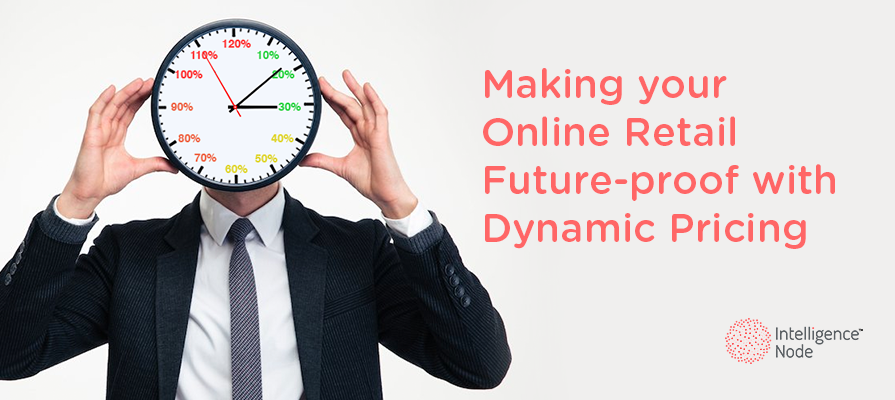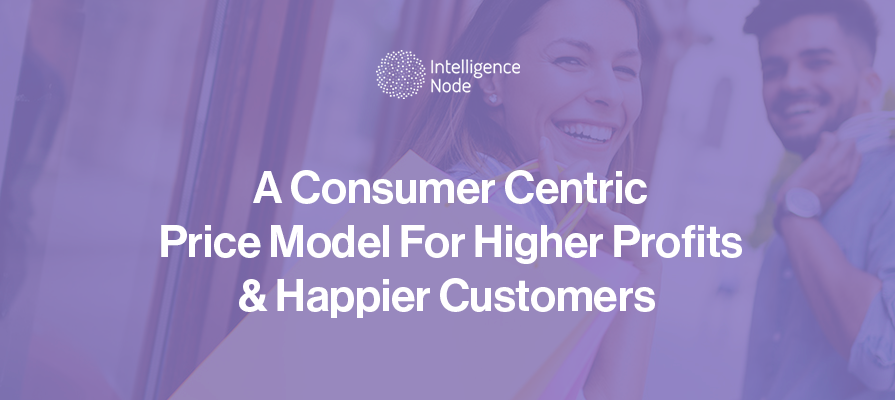2022 has been a turning point for several key aspects of retail, bringing with it a wave of new consumer trends and technological advancements. The onset and eventual release of social restrictions transformed the retail industry, primarily owing to the change in behavior, priorities, and sentiments of consumers; as well as how major retailers and disruptors have responded and adapted to these evolutions.
The introduction of the metaverse and a digital-first buying journey have paved the way for innovation across the map, as brands gather data-driven insight to create engaging, holistic, immersive retail experiences. New entrants have disrupted the digital landscape consistently as behemoths adapt to consumer needs. In such a multifaceted and competitive space, the best way for retailers to boost profitability amid the madness is retail intelligence.
The following post summarizes some of the major transitions and newly formed consumer expectations, to help you best prepare for the transformed retail arena, combined with Intelligence Node’s analytics and actionable insights to get your brand across the finish line:
2022’s Retail Roundup
- 94% of consumers made a beeline for brick-and-mortar stores in post-pandemic 2022- spending 11% more time and money in these outlets compared to online.
- Physical stores are expected to account for 72% of retail sales by 2024, a drop from 87% in 2022, indicating that the future of retail was, and continues to be digital.
- As of 2022, eCommerce and digital shopping accounted for 13% of total retail sales in the U.S. (physical stores still account for 87% of sales).
- Total global retail sales are valued at a whopping $26.7 trillion. The US eCommerce market is expected to experience a CAGR of 13.5% between 2017 and 2025.
- Retail is the #1 employment sector in the US, with 52 million jobs provided as of 2022. Automation and AI have helped industry leaders to retain employees by eliminating tedious tasks.
- 73% of supply chain professionals still cannot provide real-time tracking to customers- yet the last mile delivery market is set to grow 16% annually between 2021 and 2025.
- 79% of shoppers expressed interest in auto replenishment services and subscription models for their frequent purchases in the beginning of 2022.
- 52% of consumers value increased sustainability efforts from brands, an effect of the pandemic’s forced changes in buying habits.
- A report by Internet Retailer states: 30.9% of retailers say they still cannot track consumers across devices, and another 38.2% can only track some consumers some of the time.
- eCommerce spending is expected to reach $36 billion in 2023. This is a 20% projected increase from 2022.
The Path to Purchase in 2023
- Mobile devices account for 71% of retail traffic, and 61% of orders: trumping desktop PCs and any other consumer electronic device.
- 65% of shoppers use resale or ‘recommerce’ services, especially in fashion retail. Roughly 30% of major retailers are involved with resale services.
- Almost 35% of weekly online shoppers use subscription services, and the global subscription eCommerce market size is expected to reach $904.2 billion by 2026.
- Omnichannel is crucial, as 86% of consumers will use at least 2 different channels (and 70% will use at least 3) when making a single purchase.
- Regardless of where the final transaction is made, 87% of US shoppers start with product searches. 74% of consumers begin product searches on Amazon.
- Offering subscription memberships to customers is shown to increase purchases: existing subscription brands grew their overall consumer base by 31% last year, proving an increased interest in this mode of purchase.
- Digital advertising continues to attract consumers: US retailers will significantly increase their ad spend in 2023, with projections hitting over $50 billion on digital ads. This is a 50% projected increase from 2020.
- Strategy still overshadows spend, however, as average conversion rates for a retail lead was stagnated at 3% in 2022.
- The buying journey in the mind of the consumer extends well into the post-transaction phase: post purchase follow ups, personalized deals, and trigger notifications are all part of the extended purchasing process, as outlined by McKinsey. 89% of companies that rate their experience management strategy as better than average, report better revenue growth than competitors.
- Research by HRC Retail Advisory indicates that 59% of shoppers use their mobile devices in-store to compare costs or research deals and coupons.
Modern-day Consumer Expectations
- Entering 2023, the average U.S. household income is $87,864. (Median is $61,937). Spending power is set to return with a vengeance: according to new research by analysts at Goldman Sachs, household cash flow will have an increase of about $600 or 4.2%, starting post the holidays.
- 61% of consumers are willing to pay more to have their products delivered on the same day: but only 51% of retailers offer same-day delivery.
- BOPIS: ‘curbside pickup” or “buy online, pickup in-store” options are increasing in popularity. 67% of US shoppers have utilized this feature as of 2022 and by 2025, it is expected that 10% of all sales will be fulfilled this way.
- Two out of three shoppers still prefer that their orders be delivered to them: 56% of shoppers aged 18-34 expect same-day delivery options.
- 87% of customers spend less or entirely abandon brands that lack effective customer service.
- 92% of consumers claim to be willing to buy again from channels that offer easy returns, whereas 79% expect free shipping on returns. 67% of shoppers look into a store’s return policy before placing an order.
- According to RetailNext, 84% of consumers believe retailers should be doing more to integrate their online and offline channels.
- 60% of shoppers say they are more likely to be repeat customers when offered personalized shopping experiences.
- Flexible payment options make or break a shopping experience, as digital wallets are expected to take over all other payment methods by 2024. 60% of this market share is currently held by PayPal.
- 16,000 respondents claim that sustainability is now a crucial concern in their purchasing decisions, and many have paid up to 59% more to purchase more sustainable options.
eCommerce and Omnichannel Developments
- 80% of consumers are willing to share personal data in exchange for deals and offers: 54% expect a personalized discount within a day, and 32% within an hour.
- 74% of eCommerce companies have a website personalization program.
- The recommendation engine market size is projected to hit $12 billion by 2025.
- 3D views of products generate 50% more engagement than static imagery: zoom, 360 views, AR try-on capabilities, and detailed descriptions as well as review sections have become critical to the modern-day shopper.
- 40% of brands have claimed to prioritize providing experiential retail, with 31% seeking to expand their physical presence next year. Roughly 50% of brands are preparing to unify their online and in-store offerings, operations, and data.
- CPG retailers have stated that their eCommerce sales (19%) and brick-and-mortar retail sales (18%) are nearly equal.
- The opportunity cost of not being omnichannel is 10% in lost revenue. Hybrid experiences, in store kiosks, engaging digital spaces, are reshaping retail.
- DTC brands are approximately 13% of all US eCommerce businesses, and 23% of consumers claim DTC channels offer better quality products.
- Even among small to midsize DTC brands, 47% have some presence in brick and mortar stores.
- 61% of consumers say individual DTC companies offer the best personalized and engaging digital experiences.
The Metaverse and Social Commerce
- In 2022, retailers saw a jump in the % of consumers willing to make purchases via social media: while numbers rose across the board, TikTok saw the largest increase, jumping from 35% to 48% between Q2 and Q3.
- Social commerce is forecasted to reach $30.73 billion in sales in 2023, accounting for 20% of global retail eCommerce sales. 75% of retailers already sell on social media, with social storefronts and shoppable posts.
- Gen Z already leans on channels such as TikTok for product recommendations, and 43% of businesses who sell on social media claim that at least half their profit is from these channels.
- On TikTok, UGC (User Generated Content) videos are 22% more effective than brand videos: organic content is deemed more trustworthy by comparison.
- 74% of adults in the US are considering joining the metaverse and claim to be willing to spend up to $1000 on advanced VR gear, as global spending on AR/VR is set to rise to $72.8 billion in 2024.
- The metaverse market, similarly, is expected to hit $800 billion by 2024, as consumer and brand investments in its foundation technologies increase. The global metaverse market size is projected to grow from $61.8 billion in 2022 to $426.9 billion by 2027.
- In 2021, the total NFT sales reached a whopping 17.1 billion, a 200x growth over 2020.
- 60% of gamers participate in non-gaming activities and events within video games, such as concerts or limited period sales. In a 60-minute event, a digital Gucci bag was sold for $4,115 on Roblox. While it was originally and officially sold for roughly 475 Robux ($6), scalpers flipped the item at an inflated price, nearly $800 more than its real-world counterpart, despite it being non-transferable (out of Roblox).
- The metaverse hit a high of 400 million monthly active users in 2022: Roblox claims 230 million monthly active users, and by 2026 it is expected that 25% of people will spend an hour or more in the metaverse every day. Today, 51% of the metaverse is currently 13 years old or younger.
- The future looks promising with investments pouring in with the metaverse and web3 displaying an $8 trillion opportunity.
Final Thoughts
According to IBM’s U.S. Retail Index, COVID-19 accelerated the shift away from brick-and-mortar stores to digital shopping by roughly five years. To add to this data, the above online shopping statistics clearly confirm this shift to digital and reiterate the importance of pivoting retail businesses to offer unified, digital, and omnichannel experiences to cater to the newly evolved consumer and thrive in this developing eCommerce space.
The retail arena is changing! Equip yourself with real-time consumer behavior trends to thrive in the ever-evolving eCommerce landscape. Book a Demo.
References :
FORRESTER: Vast, Fast, And Relentless: Consumer Buying Enters A New Era
FORRESTER: July 2020 COVID-19 Retail Scenario Planner (Global)
EY: Future Consumer Index edition 1: How COVID-19 changes consumer behaviors




